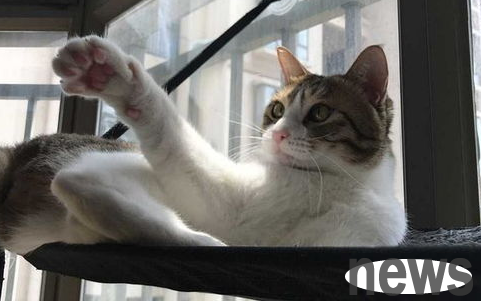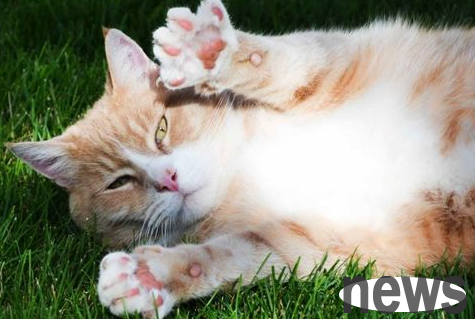What should I do as a shoveler for cats? Gem-like eyes are the charming thing for most cats, but sometimes, this gem may encounter some unpredictable changes, such as innate developmental abnormalities, which not only makes the cat's eyes dull, but may also lead to the occurrence of some diseases and affect the cat's life.

Congenital eye diseases are mostly manifested as the cat develops. According to the British Mirror, the two-year-old cat, Matilda, suffers from a congenital eye disease. Her black eyeballs are bulging, which resemble alien creatures. Her unique appearance makes her popular on the Internet. She has more than 30,000 fans on the social networking website Instagram.
It is reported that this eye disease Matilda suffers from is called congenital lens dislocation, which causes blurred vision and bulging of the eyeball. Matilda's owner called for a treatment for it on an Instagram account specially opened for it, and learned that Matilda's brothers all suffered from the same disease.
Now after consulting with the veterinarians from multiple parties and confirming that the disease does not feel pain, Matilda's owner decided not to take surgical treatment for it, so that it can remain healthy and happy. Its owner also stated that Matilda is a perfect kitten that will always love and be with him.
What are the congenital abnormalities in cats?
1. Decoidoid cysts
involve congenital, tumor-like, island-like mutant skin tissue of the eyelid, conjunctiva or cornea; sometimes more than one tissue occurs; animals may have symptoms of blepharospasm and tear discharge.
2, PPM
is a pupil membrane residue that connects only the edge of the pupil; may coexist with iris defects, cataracts, and uveal defects; can be seen in any breed of cats;
3, an annular structure that is free from the anterior chamber, adheres to the iris or corneal endothelium, with pigmentation or depigment.
4. Congenital glaucoma and cow eyes
can be seen in cats; tears, enlarged, red and painful eyeballs can be seen.
5. Congenital pupil abnormality
polymyopathy (more than one pupil); apoptosis (no pupil); iris loss; pupil deformation (abnormal pupil shape).

6. Congenital cataracts, primary, often inherited or secondary to other progressive defects; often accompanied by other congenital lens abnormalities, such as small lens, conical lens, spherical lens (often protruding the posterior lens capsule) and lens defects (lens equatorial notches of the lens, which may also be accompanied by defects of the ciliary body and ciliary band); often accompanied by white pupil disease.
7, PHTVL and PHPV
genetic defects; manifest as some blood vessels are transparent; vitreous, lens and lens capsules show progressive aberrations; cataracts and white pupils, or bleeding in the lens may be seen, causing red light (rare), or neovascularization in the posterior lens capsule to reflect red light in the pupil area.
8. Photoreceptor dysplasia
can be seen in rod cells, cones, or both at the same time; the direct pupils are abnormal in light reflection and indirect pupils, or the affected animal responds slowly when opening its eyes.
9. Cat rod cells and cone cells are dysplasia
can be seen in Persian cats (detailed introduction), Abissoyani cats and certain hybrid breeds in the United States; the affected cats can see dilated pupils at 2-3 weeks old, nystagmus at 4-5 weeks old, and retinal degeneration at 8 weeks old, and blindness can be found through ophthalmoscopes.
